LCA tools in the built environment — VERT WLC Tool, powered by 2050 Materials
The landscape of LCA tools in the built environment is evolving rapidly. While it’s not accurate to claim a monopoly in this space, the growing integration and sophistication of these tools are undeniable. The status quo is shifting towards more advanced, API-driven solutions.
How the LCA landscape is changing
We’ve written before about the evolution and commoditisation of LCA tools Our belief is firm: these tools are becoming integral to the digital infrastructure of the Architecture, Engineering, and Construction (AEC) sector. The future is likely to witness LCA tools offering real-time, automated analyses, fully integrated into Building Information Modelling (BIM) systems. This integration is becoming increasingly feasible with the advancement in APIs and data technology within the industry.
Introducing VERT — one of the new generation WLC tools in the built environment
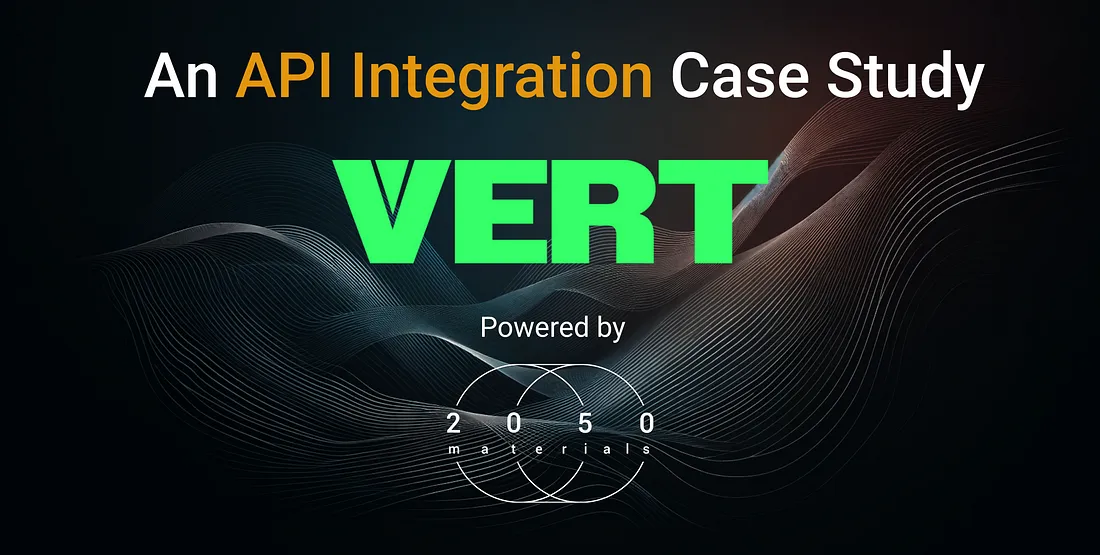
One striking example of this trend, or ‘verticalisation’, is the innovative LCA tool in the UK, known as VERT.
At 2050 Materials, our collaboration with Hawkins Brown and Fabrit in developing their RICS WLC-aligned LCA tool stands as a testament to this progress. This tool leverages the comprehensive product-level information from the 2050 Materials’ API, exemplifying the synergy between expert knowledge and advanced technology in enhancing LCA tools in the built environment.
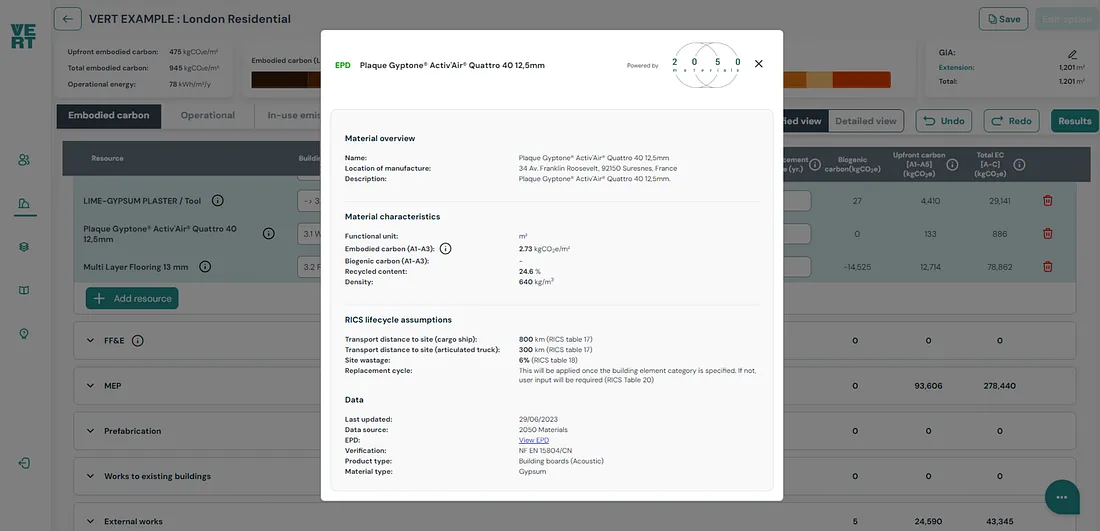
How the 2050 Materials integration works
The integration process of the VERT WLC tool with 2050 Materials data is a testament to collaborative innovation in the built environment. Initially, the VERT team carefully selected the appropriate API endpoints provided by 2050 Materials, ensuring a tailored approach that aligns with their software’s needs. This critical step marked the beginning of a seamless integration process.
Following this, the developers obtained access tokens, enabling them to integrate the 2050 Materials API into their existing database schema effectively. This integration allowed for a robust and dynamic exchange of data, crucial for the tool’s accuracy and efficiency.
Moreover, sustainability specialists from both teams worked closely together. This collaboration was vital in addressing any classification concerns, ensuring that the data aligned accurately with the industry standards and sustainability goals.
One of the notable achievements of this partnership was the development of RICS Whole Life Carbon Assessment (WLCA) labels to minimise assumptions of the LCA analyst doing the assessment. This was a joint effort, showcasing the synergy between the two teams and their commitment to advancing sustainability in the built environment.
For users of the VERT WLC tool, this integration means they have access to a vast array of verified Environmental Product Declarations (EPDs) directly linked to the 2050 Materials platform. This feature enhances the user experience by providing easy access to a rich database of sustainable materials, crucial for conducting accurate and comprehensive LCAs.
Why This Structure Matters in the LCA World
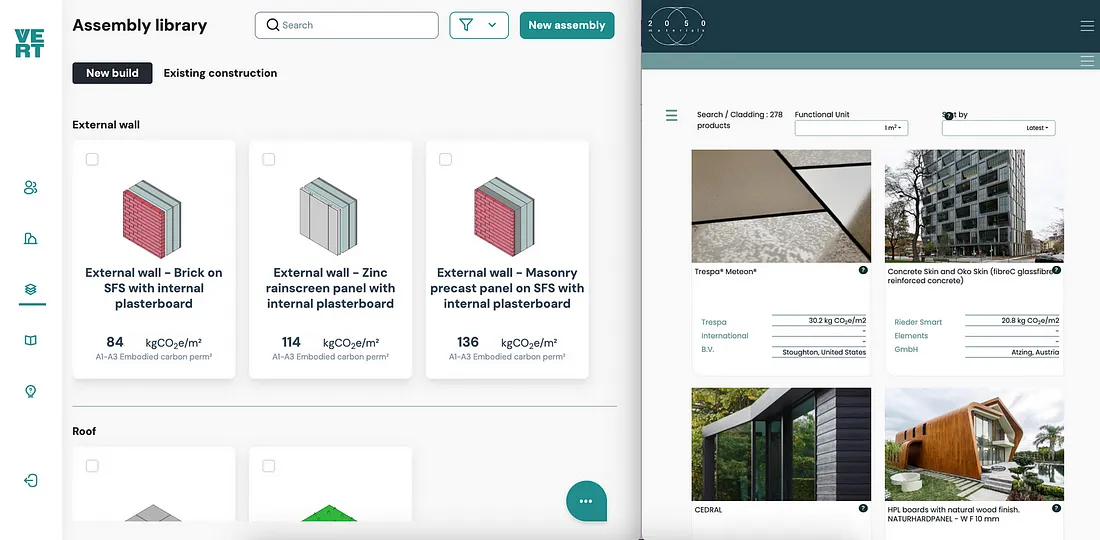
In the realm of LCA tools in the built environment, the structure of data integration and collaboration holds significant importance. The critical role of data in achieving sustainability goals in Architecture, Engineering, and Construction (AEC) cannot be overstated. As we delve deeper into the era of sustainability, the emphasis increasingly shifts towards the quality and structuring of data, a task that requires a specialized approach distinct from software development.
Having an external party like 2050 Materials, focused solely on data, assures high quality and reliability. This specialisation enables software tool builders to concentrate on enhancing their tools’ functionality and user experience. Such a division of labor ensures that each aspect of the LCA process — data accuracy and software efficiency — is given the attention it deserves, thereby elevating the overall effectiveness of LCA tools in the built environment.
The Critical Importance of Data
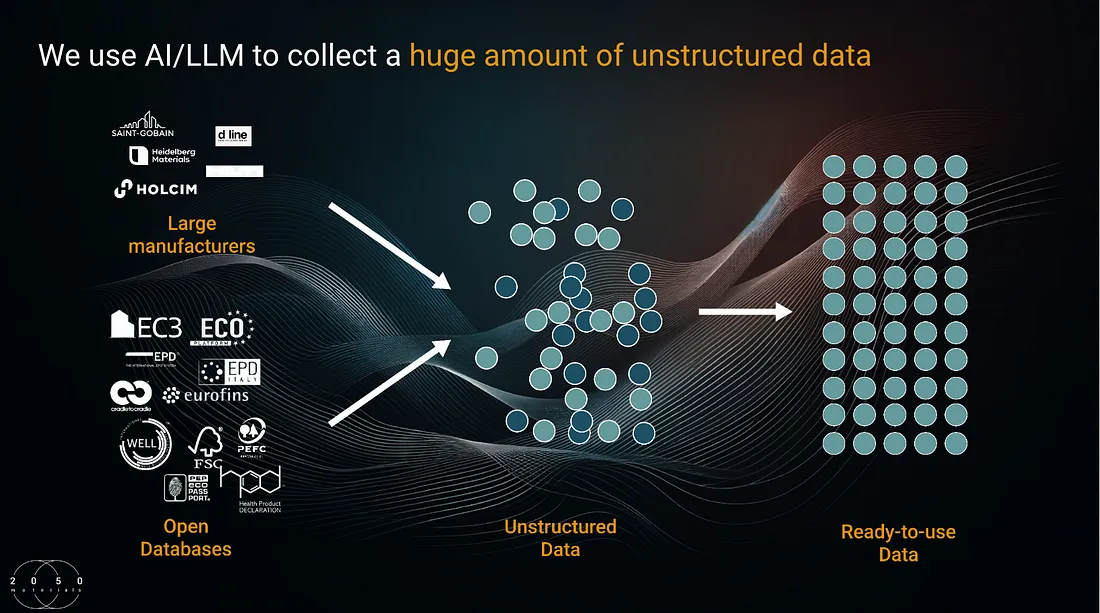
2050 Materials’ API offering is different to what an internal data-collection team usually achieves.
As LCA in the built environment becomes more commoditized, the focus inevitably shifts to the quality and reliability of the data used. Commoditisation risks diluting the complexity of the LCA process, making the role of accurate, insightful data even more crucial (Data & Society, 2019). Companies that can navigate this challenge will not only survive but shape the future of sustainable construction.
In a data-driven world, LCAs stand at a critical juncture. They have the potential to act as either a catalyst or a crutch for sustainable construction practices. The future of the built environment hinges not just on the data we gather but on the integrity and insightfulness of that data. This is the defining challenge and opportunity that lies ahead for the AEC sector.
Offload your team from data work
Looking to elevate your Life Cycle Assessment (LCA) tools? Contact us at api@2050-materials.com for access to our comprehensive API. Let your team focus on developing innovative LCA software, while we handle the heavy lifting of data management. Together, we can drive sustainability in construction to new heights!
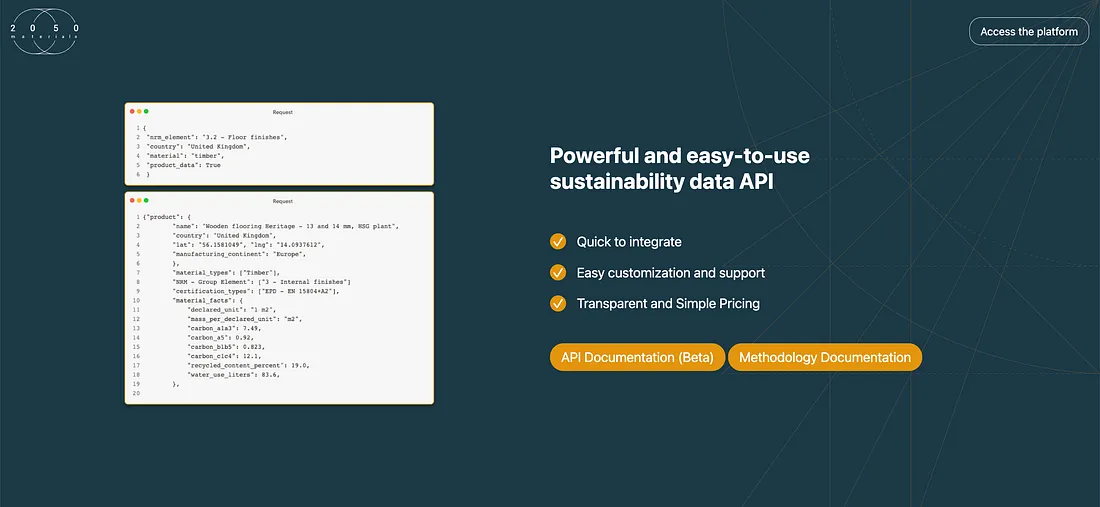
Related articles

Case Study: Embodied Carbon Dashboards from BIM, an Integration with VIM & 2050 Materials
Go in minutes from BIM files to beautiful embodied carbon dashboards.
Read more
LAIOUT Automated Floor Plans - Powered by 2050 Materials
By integrating the carbon estimation into their app, LAIOUT are enabling users to make informed, sustainable choices in their building designs.
Read more
Give the client tools — Integrating 2050 Materials API with VIKTOR for Early Stage Building Design
In the realm of architecture and construction, the push towards sustainability is more crucial than ever.
Read more